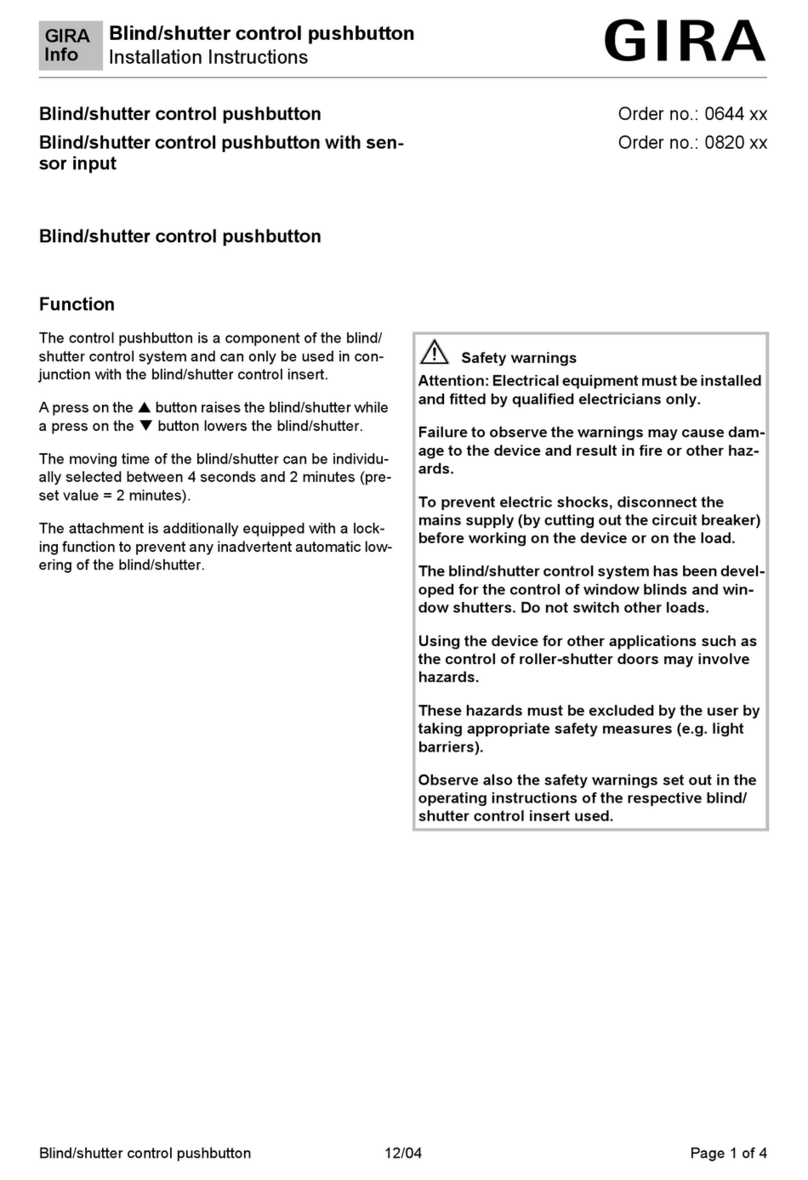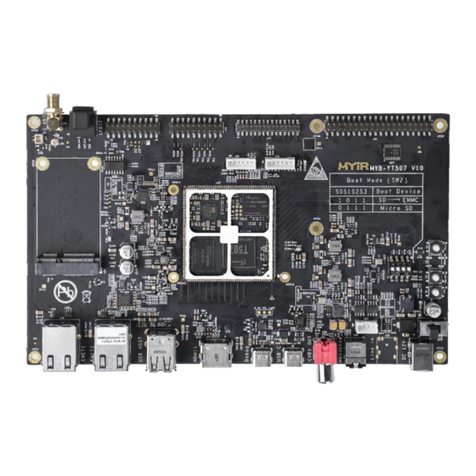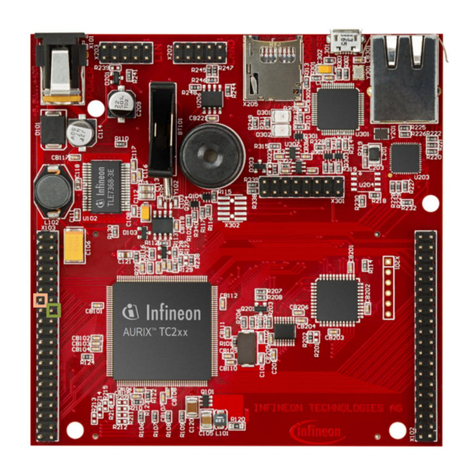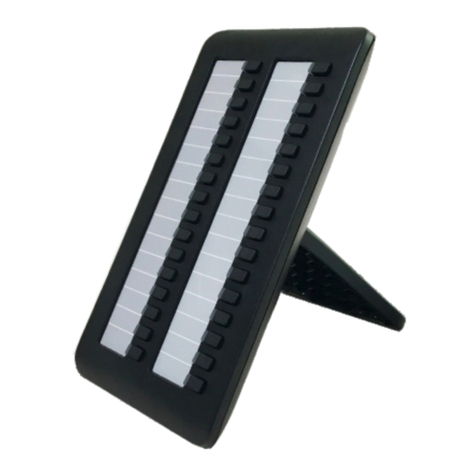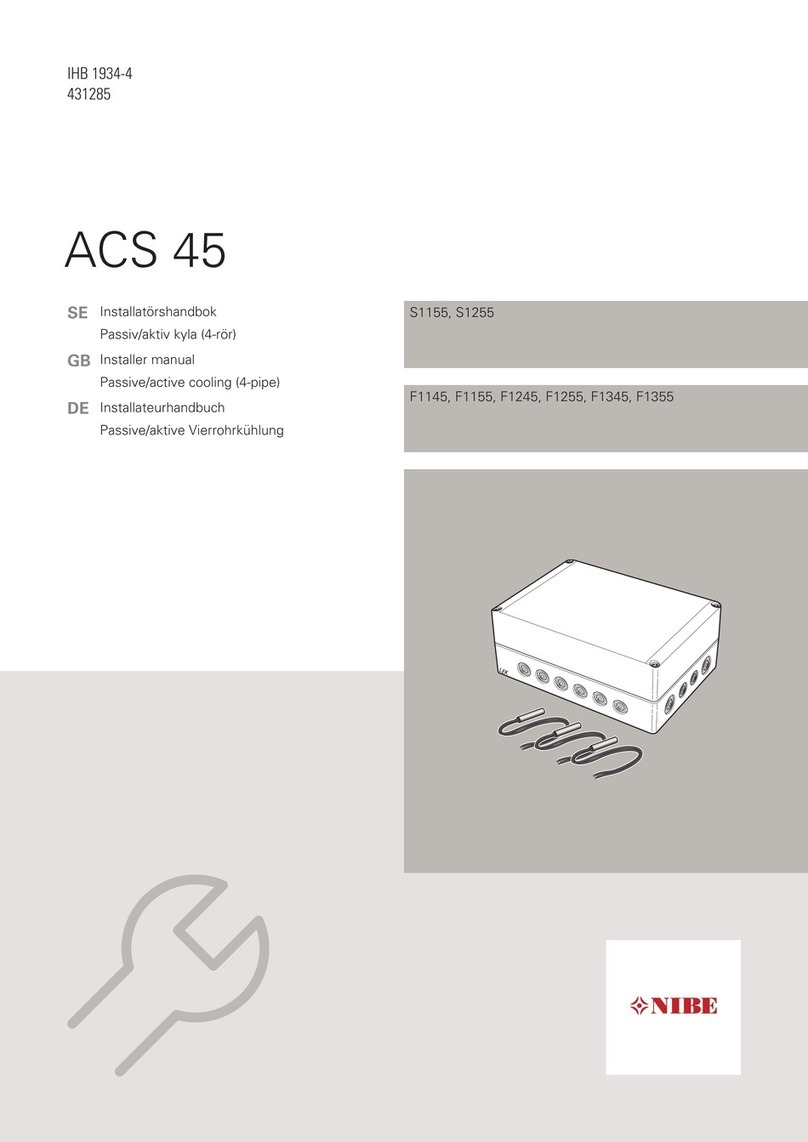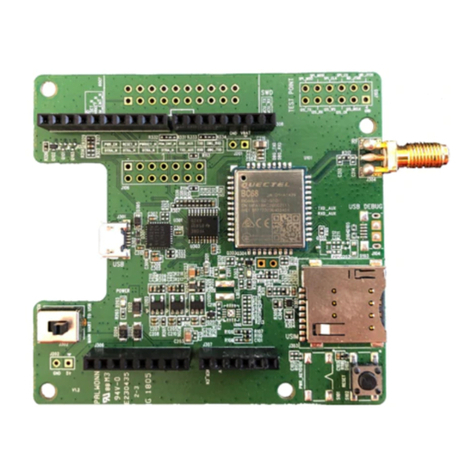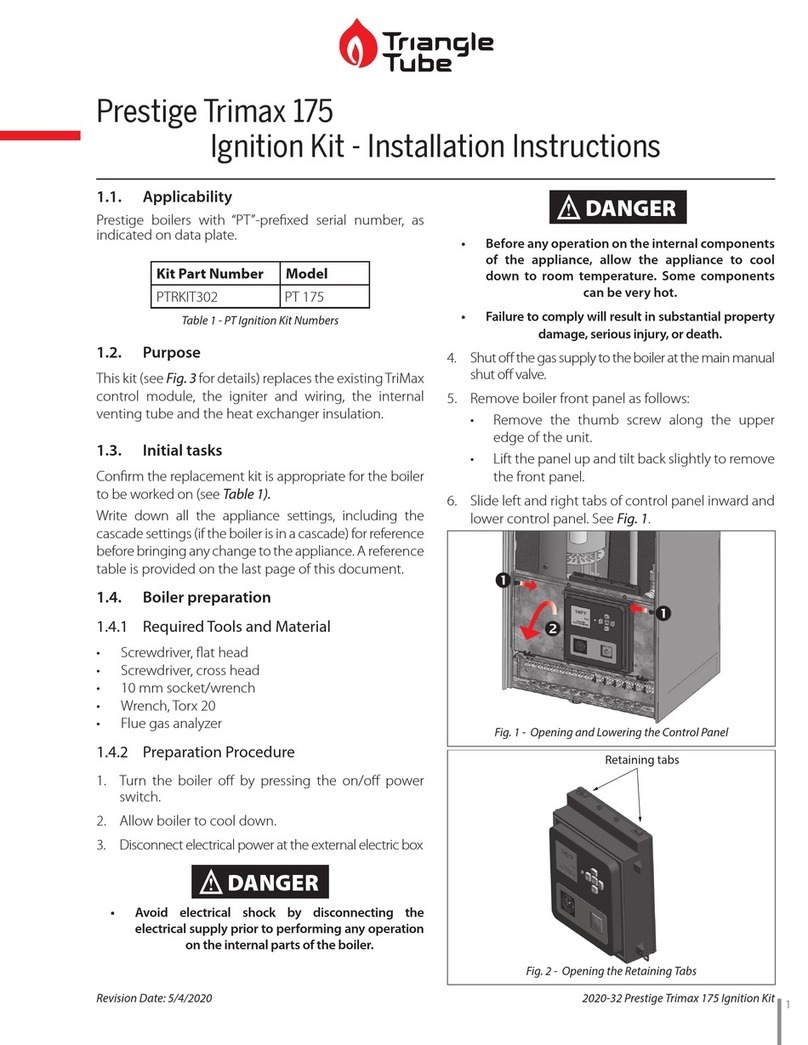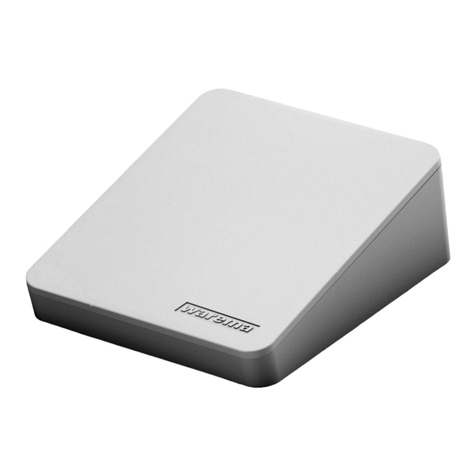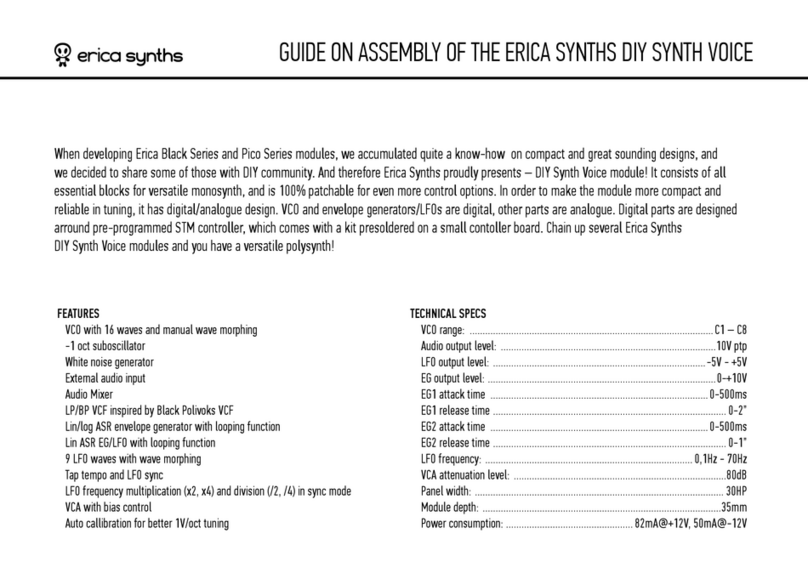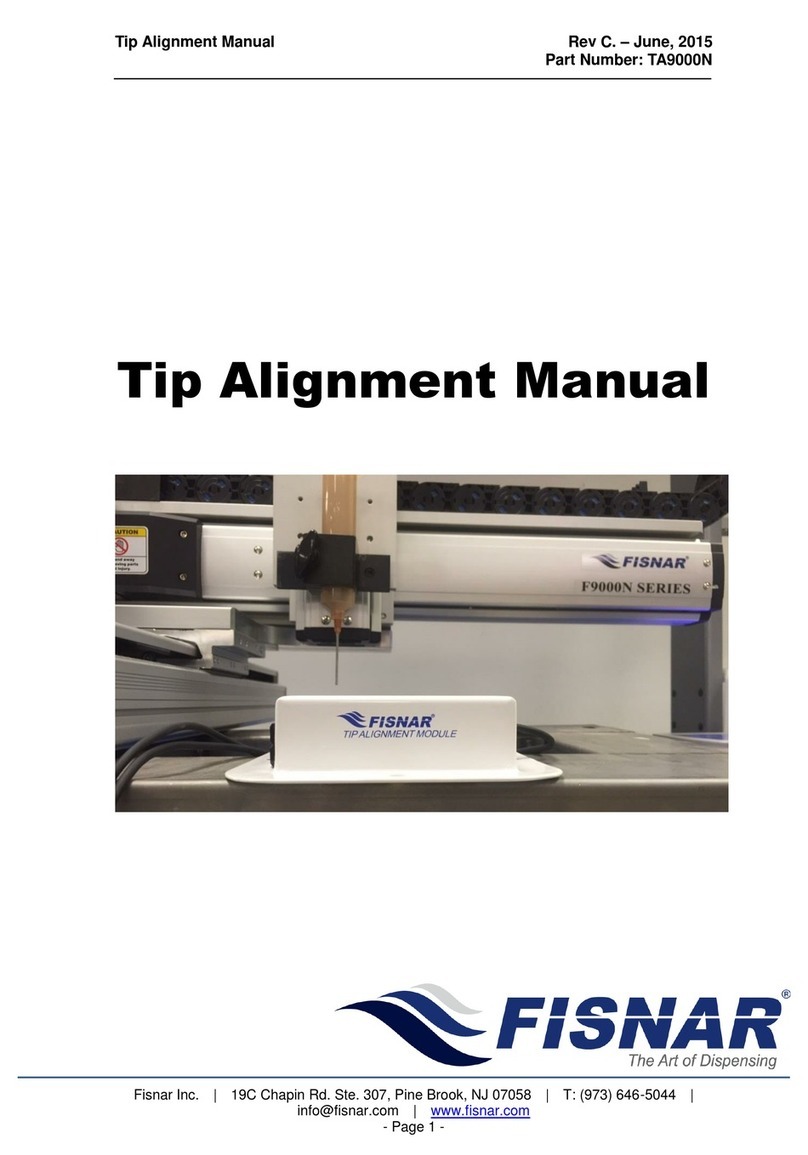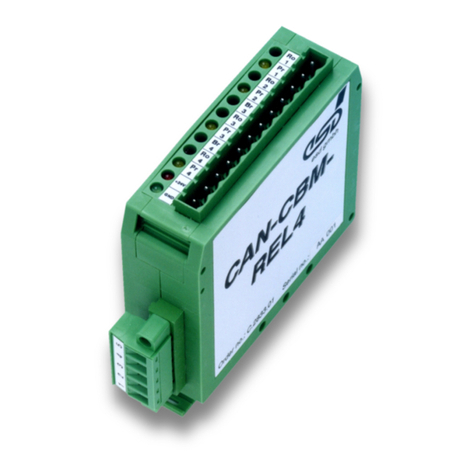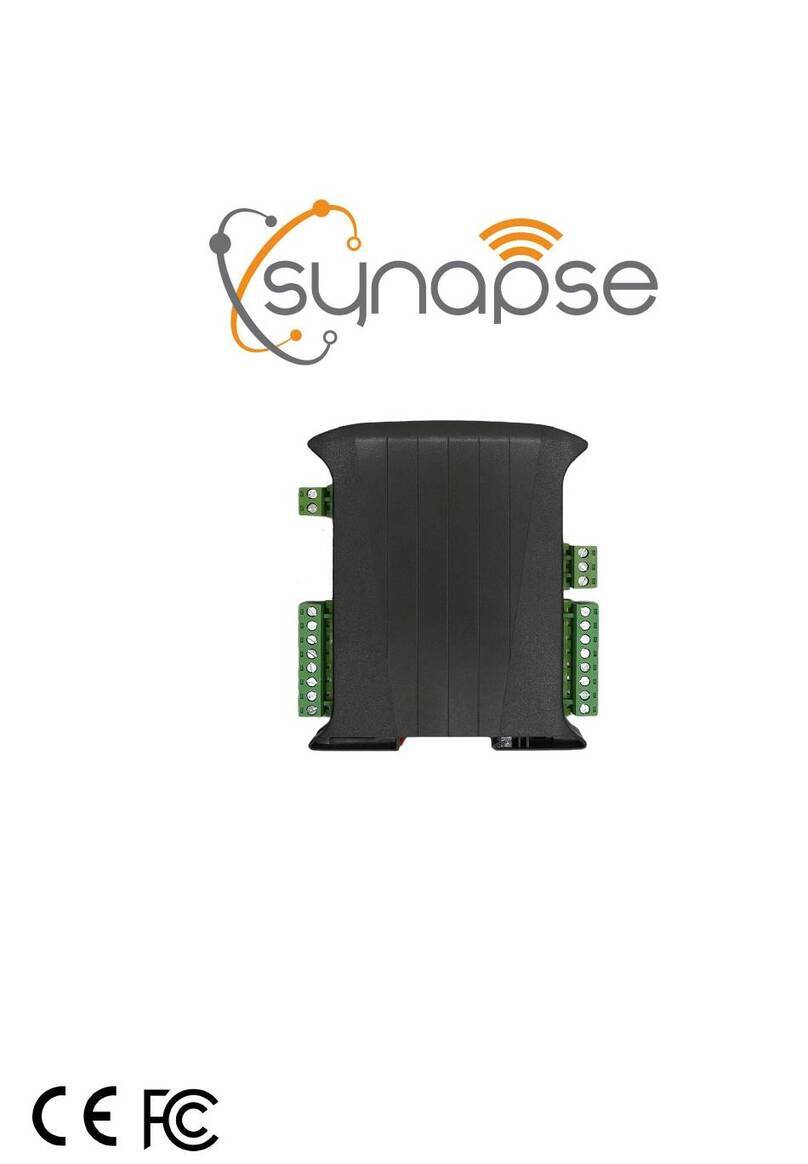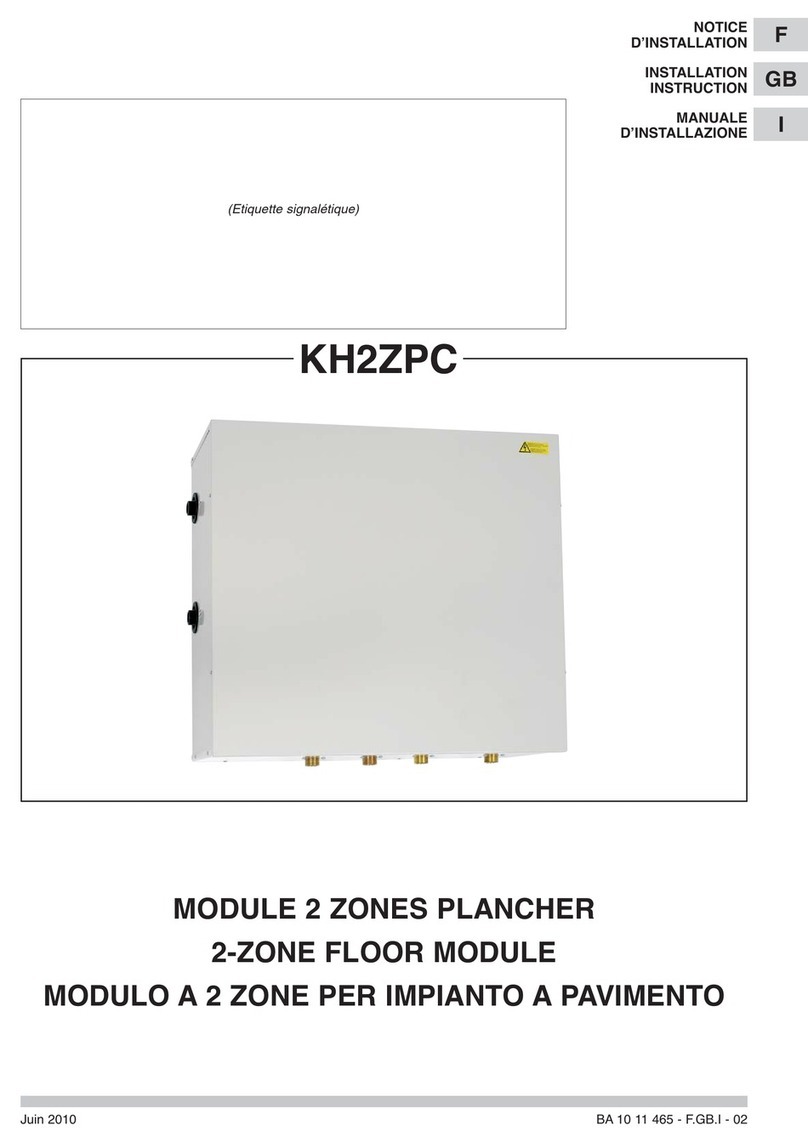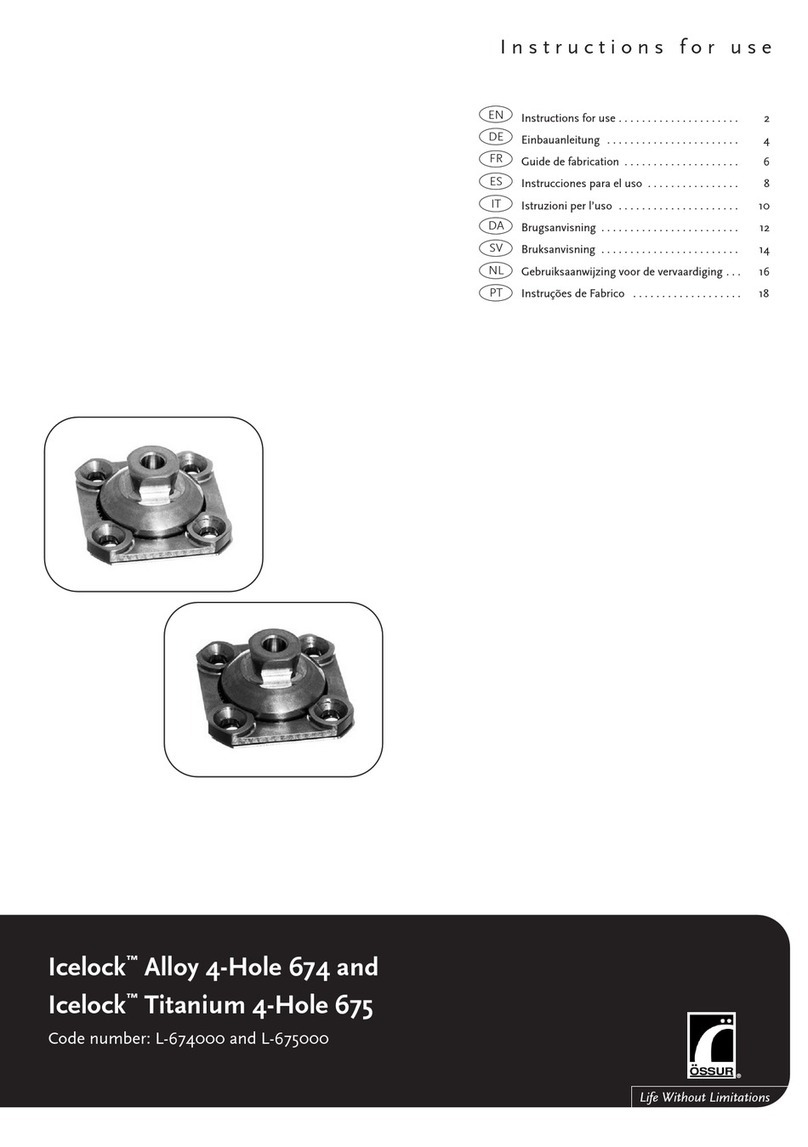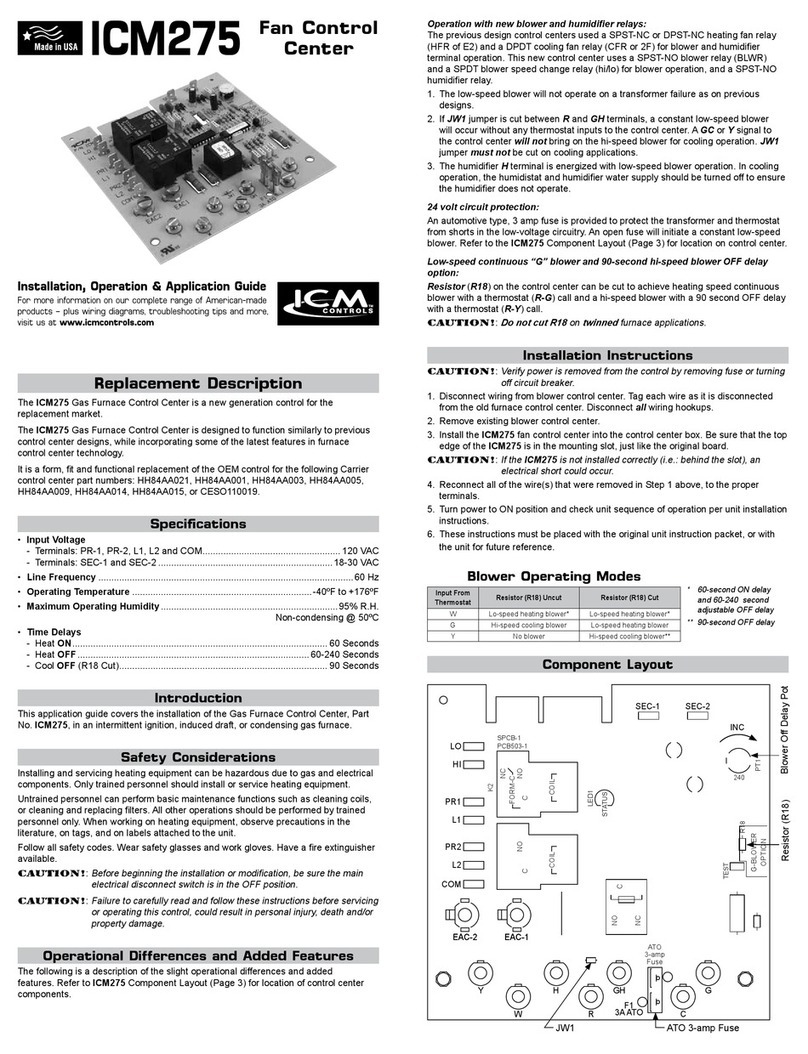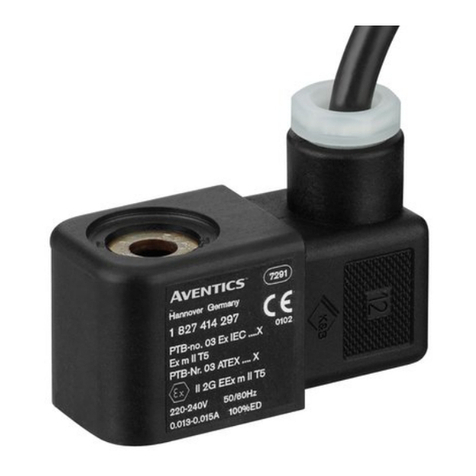Charles 3652-62 User manual

Section 365–262–205
Fifth Printing, March 2000Telecommunications Group
2000Charles Industries Ltd.
CLEI is a trademark of Bell Communications Research, Inc.
All rights reserved. Printed in United States of America.
The availability of features and technical specifications herein subject to change without notice. Page 1 of 17
3652–62 4-Wire E&M with PLR and ER Channel Unit
3652–68 4-Wire E&M with PLR and ER Channel Unit
Complies with UL Standard 1459 Second Edition (3652–68 Only)*
CONTENTS PAGE
Part 1. GENERAL 2. . . . . . . . . . . . . . . . . . . . . . . . . . . . . . . . . . . . . . . . . . . . . . . . . . . . . . . . . . . . . . . . . . . . . . . . . . . . .
Part 2. INSPECTION 3. . . . . . . . . . . . . . . . . . . . . . . . . . . . . . . . . . . . . . . . . . . . . . . . . . . . . . . . . . . . . . . . . . . . . . . . . . .
Part 3. APPLICATION GUIDELINES 3. . . . . . . . . . . . . . . . . . . . . . . . . . . . . . . . . . . . . . . . . . . . . . . . . . . . . . . . . . . . .
Part 4. CIRCUIT DESCRIPTION 5. . . . . . . . . . . . . . . . . . . . . . . . . . . . . . . . . . . . . . . . . . . . . . . . . . . . . . . . . . . . . . . . .
Part 5. MOUNTING 10. . . . . . . . . . . . . . . . . . . . . . . . . . . . . . . . . . . . . . . . . . . . . . . . . . . . . . . . . . . . . . . . . . . . . . . . . . .
Part 6. INSTALLER CONNECTIONS 11. . . . . . . . . . . . . . . . . . . . . . . . . . . . . . . . . . . . . . . . . . . . . . . . . . . . . . . . . . . .
Part 7. OPTIONS 11. . . . . . . . . . . . . . . . . . . . . . . . . . . . . . . . . . . . . . . . . . . . . . . . . . . . . . . . . . . . . . . . . . . . . . . . . . . . .
Part 8. ALIGNMENT 14. . . . . . . . . . . . . . . . . . . . . . . . . . . . . . . . . . . . . . . . . . . . . . . . . . . . . . . . . . . . . . . . . . . . . . . . . .
Part 9. TESTING 14. . . . . . . . . . . . . . . . . . . . . . . . . . . . . . . . . . . . . . . . . . . . . . . . . . . . . . . . . . . . . . . . . . . . . . . . . . . . .
Part 10. TECHNICAL ASSISTANCE 15. . . . . . . . . . . . . . . . . . . . . . . . . . . . . . . . . . . . . . . . . . . . . . . . . . . . . . . . . . . . .
Part 11. WARRANTY & CUSTOMER SERVICE 15. . . . . . . . . . . . . . . . . . . . . . . . . . . . . . . . . . . . . . . . . . . . . . . . . . .
Part 12. SPECIFICATIONS 16. . . . . . . . . . . . . . . . . . . . . . . . . . . . . . . . . . . . . . . . . . . . . . . . . . . . . . . . . . . . . . . . . . . . .
3652–62
LINE
DROP
BUSY
NORM
LINE
DROP
LINE
DROP
T
&
R
E
&
M
T1
&
R1
BUSY
4W E2M2
ISSUE 5
Figure 1. 3652–62 4W E&M with PLR and ER (Issue 5) Channel Unit

Section 365–262–205
2
1. GENERAL
1.1 Document Purpose
This document provides information on the Charles Industries 3652–62 (Equipment Issue 5) and 3652–68 (Equip-
ment Issue 6) 4-Wire E&M with PLR and ER (4W E&M/PLR) Channel Units. These channel units are used in the
Charles Industries 360/363 D4 Digital Carrier Terminal. The 3652–62 is shown in Figure 1. Table 1 lists the 4W
E&M/PLR channel units and those of the former issue which they replace.
Field repairs/modifications may void compliance with UL 1459 - Second Edition.
*CAUTION
Table 1. 4W E&M/PLR Channel Unit Cross Reference
Model Issue Description Replaces
Model Issue
3652–62 5 4W E2M2 w/jacks, PLR, and
ER 3652–02
3652–12
3652–62
2
1
3
3652–68 6 4W E&M w/jacks, PLR, and
ER 3652–13 1
1.2 Document Status
This document is reprinted to include a general editorial update.
1.3 Equipment Function
1.4 Equipment Location/Mounting
Occupies one channel unit slot of a Charles Industries 360/363 D4 Digital Carrier Terminal.
1.5 Equipment Features
The 4W E&M/PLR channel units include the following features:
Compliance with the specifications in AT&T Publication 43801
Compliance with UL Standard 1459 Second Edition (3652–68 only)
Front-panel NORM/BUSY switch
Front-panel BUSY LED indicator
Selectable Type I, II or III E&M or PLR signaling interface
Prescription transmit and receive gain controls in 0.1dB steps
Extended Range (ER) capability (+10dBm to –22.5dBm)
Front-panel lifting jacks
E&M reversal capability to accommodate office wiring and test equipment interfacing
Automatic trunk processing during a carrier failure
Additional set of E&M leads on the 3652–62
The 4W E&M/PLR channel units contain lifting jacks which provide access by breaking the line toward the DROP
(trunk facility) and LINE (carrier facility). Jacks are provided on T&R, E&M, and T1&R1 leads.

Section 365-262-205
3
2. INSPECTION
2.1 Inspect for Damages
Inspect the equipment thoroughly upon delivery. If the equipment has been damaged in transit, immediately re-
port the extent of damage to the transportation company.
2.2 Equipment Identification
Charles Industries’ equipment is identified by a model and issue number imprinted on the front panel or located
elsewhere on the equipment. Each time a major engineering design change is made on the equipment, the issue
number is advanced by 1 and imprinted on subsequent units manufactured. Therefore, be sure to include both
the model number and its issue number when making inquiries about the equipment.
2.3 Static Concerns
Each channel unit is shipped in a static-protective carton to prevent electrostatic charges from damaging CMOS
devices. A unit intended for future use should be tested as soon as possible and returned to its protective carton
for storage. A protective carton can be identified by a black coating on the inside. Previously, Charles Industries
used an uncoated carton and enclosed the channel unit in a black or brown static-protective plastic bag.
Channel units contain sensitive electronic devices. Do not ship or store them near strong
electrostatic, electromagnetic, magnetic, or radioactive fields. Use either the coated cartons or the
protective bags with uncoated cartons for shipping or storage of channel units.
CAUTION
3. APPLICATION GUIDELINES
The 4W E&M/PLR channel units allow versatility for use in many applications. These units provide switch-select-
able E&M or PLR signaling and an E&M reversal switch to accommodate office wiring and test equipment inter-
facing for testing.
The 3652–62 (E2M2) provides an additional pair of E&M leads which can be used for tandem Foreign Exchange
(FX) applications, alarm monitoring, or toll-ticketing.
Both the 3652–62 and 3652–68 can be used as universal spares for all 4W E&M or PLR channel units to cover a
wide range of applications with maximum flexibility. Refer to Figure 2 through Figure 4 for typical applications.
3.1 Type I, II, III or PLR Signaling Interfacing
The signaling port of the 4W E&M channel units can be optioned for a Type I, II, or III interface. Type I is used
when no ground potential exists between the trunk circuit and the carrier terminal. Type II is used when a differ-
ence in ground potential exists. Type III uses 3-wire balanced signaling leads for the M-lead, however; it relies on
a return from the channel unit through ground for operating the E RELAY in the trunk circuit. The PLR signaling
utilizes a negative battery to interface between the CO trunk circuit and the 4W E&M circuit. Refer to Figure 5 for
the various interface applications.
T1
R1
T
R
E
M
T
R
T1
R1
E
M
-16dB
+7dB DS1
TOLL TRUNK
OR PBX
TIE LINES
4W
E&M
360/363
D4
TERMINAL
Figure 2. Typical 4W E&M Application

Section 365–262–205
4
T
R
T1
R1
E
M
T1
R1
T
R
E
M
-16dB
+7dB
4W
E&M 4W
PLR
ANY
COMPATIBLE
CHANNEL
UNIT
COMPATIBLE
END
W/OFFICE A
CXR TERMINAL CXR TERMINAL
OFFICE A OFFICE B
TANDEM OFFICE
360/363
D4
TERMINAL
360/363
D4
TERMINAL
Figure 3. Typical 4W PLR Application
T
R
T1
R1
E
M
T1
R1
T
R
E
M
-16dB
+7dB
4W 4W
CXR TERMINAL CXR TERMINAL
OFFICE A OFFICE B
TANDEM OFFICE
FXS FXO
E2M2 E2M2
IN IN
TANDEM NORMAL
MODE MODE
S2 = REV
S3 = TANDEM
Z = Z1
ZC = CLOSED
FC = CLOSED
S2 = NORM
S3 = NORM
Z = Z2
ZC = OPEN
FC = OPEN
E2
M2 E2
M2
360/363
D4
TERMINAL
360/363
D4
TERMINAL
OPTION SETTINGS OPTION SETTINGS
Figure 4. Typical Tandem FX Application
DETECTOR
M-LEAD
DETECTOR
TRUNK
CIRCUIT
4W E&M
(3652-XX)
MM
EE
Z2
-BATT
-BATT
E-LEAD
SB
DETECTOR
M-LEAD
DETECTOR
TRUNK
CIRCUIT
4W E&M
(3652-XX)
MM
E
-BATT
DETECTOR
M-LEAD
DETECTOR
TRUNK
CIRCUIT
4W E&M
(3652-XX)
MM
EE
Z2
-BATT
-BATT
SG
MB
EB
-BATT
MBMB
E
Z3
EBSG
M-LEAD
DETECTOR
4W E&M
(3652-XX)
Z2
M-LEAD
DETECTOR
-BATT
MM
EE
Z1
ZC
Type l E&M Signaling Interface
4W PLR
(3652-62/68)
Type lll E&M Signaling Interface
PLR Signaling Interface (Type 1 Only)Type ll E&M Signaling Interface
Figure 5. Types l, ll, lll/PLR Signaling Interface

Section 365-262-205
5
4. CIRCUIT DESCRIPTION
Refer to Figure 6 and Figure 7 for the block diagrams, as needed, while reading the following circuit description.
Notes are explained in Table 2.
4.1 Transmit Voice Path
Voice Frequency (VF) signals applied to the T&R leads (pins 50 and 48) are routed through transformer T1 to the
XMT GAIN circuit.
The amplified VF signal is then applied to the XMT PRESCRIPTION GAIN circuit. This circuit provides up to
32.5dB of gain in increments of 0.1dB to accommodate input Transmission Level Points (TLPs) between
–22.5dBm and +10dBm.
Following the XMT PRESCRIPTION GAIN circuit, the VF signal is passed to the XMT FILTER and the ENCOD-
ER circuits. The XMT FILTER attenuates frequencies outside the bandwidth of a standard voice channel and pre-
vents it from passing into the ENCODER. The ENCODER converts the analog VF signal to a digital signal and
applies it to the XDATA lead for transmission to the line.
4.2 Receive Voice Path
Digital signals received at the RDATA lead are applied to the DECODER and the RCV FILTER circuits for conver-
sion to an analog signal and attenuation of frequencies outside the bandwidth of a standard voice channel. The
output of the RCV FILTER circuit is routed to the RCV PRESCRIPTION GAIN.
The RCV PRESCRIPTION GAIN circuit provides up to 32.5dB of gain in increments of 0.1dB to accommodate
output TLPs between –22.5dBm and +10dBm.
The RCV GAIN circuit amplifies the adjusted VF signal output from the RCV PRESCRIPTION GAIN circuit to the
T1 and R1 leads (pins 8 and 7) via transformer T2.
4.3 Signaling
The channel unit’s signaling path interfaces with the CO trunk circuit via the E- and M-leads (pins 4 and 45). The
M-lead signal output by the CO trunk circuit passes through the NORM/BUSY switch and into the M-LEAD DE-
TECTOR circuit.
4.3.1. E&M Signaling (Transmit)
In E&M signaling, an off-hook condition (-battery) on the M-lead is applied to the M-LEAD DETECTOR circuit via
the NORM/BUSY switch. This causes a logic 1 state to be transmitted by the ENCODER on both A and B signal-
ing highways with the outgoing bit stream via the XDATA lead, indicating a busy condition on the channel circuit.
An on-hook condition (ground/open) causes a logic 0 state to be transmitted with the outgoing bit stream and indi-
cates a channel idle condition.
4.3.2. E&M Signaling (Receive)
The information received via the carrier facility appears on the RDATA lead. An off-hook condition (logic 1 state
on A signaling highway) detected by the DECODER circuit will cause the E RELAY to operate and the BUSY LED
to illuminate, indicating a busy condition (ground or loop) on the E-lead. An on-hook condition (logic 0 state on A
signaling highway) detected by the DECODER circuit will cause the E RELAY to release and the BUSY LED to
extinguish, indicating an idle condition (open) on the E-lead.
4.3.3. E2M2 Signaling (3652–62 Only)
The E&M signaling pair of the E2M2 channel unit operate in a similar manner as those described in Paragraphs
3.09 and 3.10, except the A and B signaling highways operate independently of each other. (M-lead signaling is
applied to only the A highway; M2-lead signaling is applied to only the B highway). The E2 and M2 signaling pair
can be used for tandem FX, alarm monitoring, or toll-ticketing applications, and utilizes –48V for the M2-lead busy
status and ground or open for the M2-lead idle status.
4.3.4. M2-Lead Signaling (Transmit)
A busy condition (-battery) applied to the M2-lead is routed to the M2-LEAD DETECTOR. The M2-LEAD DETEC-
TOR circuit applies an input signal to the ENCODER, which causes a logic 1 state to be transmitted on the B
highway with the outgoing bit stream via the XDATA lead. A ground or open applied to the M2-lead causes a logic
0 state to be transmitted with the outgoing bit stream.

Section 365–262–205
6
DROP
LINE
NORM
BUSY
BUSY
XMT
PRESCRIPTION GAIN
0 T0 32.5dB IN
0.1dB STEPS
J1-A
J1-B
XMT INPUT
RANGE
-22.5 TO
+10dBm
T 50
R 48
T1
J2-A
J2-B
RCV OUTPUT
RANGE
-22.5 TO
+10dBm
J3-A
J3-B
7
4
45
T1
R1
E
M
EB 9
MB 43
-48VS
-48VR
MB2 41
EB2 46
E2
-48VS
REV
D1
S2
A
ZC
(NOTE 22)
NORM
Z3
S1-E
Z1
Z2
FC
(NOTE 20)
450 OHM
E
T2
E2 2
8
(NOTE 14)
(NOTE 16)
XMT
FILTER ENCODER
MLEAD
DETECTOR
FILTER
RCV
DETECTOR
M2LEAD
A
EE2
RELAY RELAY
W1
S1-C
XDATA
C3
-48VS
6 M2
RDATA
CGAI
CGAD
(NOTE
21)
MBI
P1
P2
P3
W2
W3
-48VS
XMT TLP
+5.2dBm
TANDEM
S3
S1-B
NORM
DECODER
(NOTE 24)
N1
N2
(NOTE 19)
M1
M2
M3
NORM
(NOTE 21)
XMT
PRESCRIPTION GAIN
0 T0 32.5dB IN
0.1dB STEPS
RCV TLP
+5.2dBm
NORM
BUSY
DROP
LINE
E&M
DROP
LINE
BUSY
X
1. PC board connector pin
2. Primary transmission path
3. Signal flow direction
4. Front panel marking
5. Open, closed screw option
6. Factory-installed optional strap
Alternate position
7. Receptacle-type optional strap
Alternate position
8.
9. N.O., N.C. relay contact.
10.
All like-designated points are connected
Ganged switches are indicated by dashed connection line
or alphabetically suffixed reference designations; numeri-
cal suffix denotes discrete switch within a package.
XXXX
11. PC mount test point
NOTES CONTINUED IN TABLE 2
NOTES:
XMT GAIN
-4.8DB
RCV GAIN
-27.7DB
T1&R1
T&R
Figure 6. 365262 4W E&M/PLR (Issue 5) Block Diagram

Section 365-262-205
7
S3
T&R
DROP
LINE
NORM
BUSY
BUSY
XMT
PRESCRIPTION GAIN
0 T0 32.5dB IN
0.1dB STEPS
J1-A
J1-B
XMT INPUT
RANGE
-22.5 TO
+10dBm
T 50
R 48
T1
T1&R1
J2-A
J2-B
RCV OUTPUT
RANGE
-22.5 TO
+10dBm
J3-A
J3-B
7
4
45
T1
R1
E
M
EB 9
MB 43
-48VS
-48VR
2 6
-48VS
REV
D1
S2
A
ZC
(NOTE 22)
NORM
Z3
S1-E
Z1
Z2
Y
(NOTE 20)
450 OHM
E
T2
1 2
8
(NOTE 14)
(NOTE 16)
XMT
FILTER ENCODER
MLEAD
DETECTOR
FILTER
RCV
A
E
RELAY
S1-C
XDATA
C3
-48VS
RDATA
CGAI
CGAD
(NOTE 21)
MBI
P1
P2
P3
-48VS
XMT TLP
+5.2dBm
TANDEM
S1-B
NORM
DECODER
(NOTE 19)
M1
M2
M3
NORM
XMT
PRESCRIPTION GAIN
0 T0 32.5dB IN
0.1dB STEPS
RCV TLP
+5.2dBm
NORM
BUSY
DROP
LINE
E&M
DROP
LINE
BUSY
X
1. PC board connector pin
2. Primary transmission path
3. Signal flow direction
4. Front panel marking
5. Open, closed screw option
6. Factory-installed optional strap
Alternate position
7. Receptacle-type optional strap
Alternate position
8.
9. N.O., N.C. relay contact.
10.
All like-designated points are
connected
Ganged switches are indicated by dashed connection line or
alphabetically suffixed reference designations; numerical
suffix denotes discrete switch within a package.
XXXX
11. PC mount test point
NOTES CONTINUED IN Table 2
NOTES:
XMT GAIN
-4.8DB
RCV GAIN
-27.7DB
(NOTE 25)
TP
Figure 7. 365268 4W E&M/PLR (Issue 6) Block Diagram

Section 365–262–205
8
Table 2. Continuation of Notes for Figure 4 and Figure 5
# Note
12. PC mount test jacks
Marking Access
T&R Line, J1–A Towards channel unit
T&R DROP, J1–B Towards office equipment
T1&R1 Line, J2–A Towards channel unit
T1&R1 Drop, J2–B Towards office equipment
E&M Line, J3–A Towards channel unit
E&M Drop, J3–B Towards office equipment
13. The XMT INPUT range at T&R: –22.5dBm to +10dBm. The unit is factory adjusted for –16dBm input with the XMT GAIN set to 26dB.
14. The XMT PRESCRIPTION circuit provides 32.5dB gain in 0.1dB steps to compensate for input level variations. Refer to the following:
INPUT (DBM) +10 +7 0 –16 –22.5
XMT GAIN (DB) 0 3 10 26 32.5
For normal mode (E&M) the XMT level is –16dBm nominal.
For tandem mode (PLR) the XMT level is +7dBm nominal.
15. The RCV OUTPUT range at T1&R1: –22.5dBm to +10dBm. The unit is factory adjusted for +7dBm output with the RCV GAIN set to
29.5dB.
16. The RCV PRESCRIPTION circuit provides 32.5dB gain in 0.1dB steps to compensate for output level variations. Refer to the following:
OUTPUT (DBM) +10 +7 0 –16 –22.5
XMT GAIN (DB) 32.5 29.5 22.5 6.5 0
For normal mode (E&M) the RCV level is +7dBm nominal.
For tandem mode (PLR) the RCV level is –16dBm nominal.
17. Busy switch:
Switch handle down is NORM (normal) position.
Switch handle up is BUSY (busy) position.
Busy switch performs the following functions:
Disconnect M-lead (E-lead in tandem mode) from the office equipment.
Turn on BUSY LED on front edge of units.
Applies a busy condition on the E-lead (M-lead for tandem mode) to the office equipment.
Send a busy condition to the far end. This function can be disabled by connecting option M to M3.
Provide a manual busy indication to the alarm and logic units.
18a. For 3652–62: M-lead conditions:
Mode M-Lead Conditions Switch Setting
Normal Busy: Battery
Idle: Open or Ground S2 NORM
S3 NORM
Tandem (PLR) Busy: Battery
Idle: Open (ZC&FC open)
Ground (ZC&FC closed)
S2 Rev
S3 Tandem
Connect Z to Z1 (EB resistance battery)
The MB-lead (Pin 43) provides resistance battery which may be returned to the M-lead through an office contact for a Type II interface.
18b. For 3652–68: M-lead conditions:
Mode M-Lead Conditions Switch Setting
Normal Busy: Battery
Idle: Open or Ground S2 NORM
S3 NORM
Tandem (PLR) Busy: Battery
Idle: Open (ZC open)
Ground (ZC closed)
S2 Rev
S3 Tandem
Connect Z to Z1 (EB resistance battery)
The MB-lead (Pin 43) provides resistance battery which may be returned to the M-lead through an office contact for a Type II interface.
19. Connect option M to M2 when using the busy switch to send a busy condition to the far end in the norm mode. Connect option M to M1
when sending a busy condition in the tandem mode. This function is disabled by putting M to M3. M3 is selected when performing signal-
ing tests on a looped channel bank or when performing single channel maintenance routines on an operating system.

Section 365-262-205
9
# Note
20a. For 3652–62: E-lead conditions: (Both E, E2)
BUSY: Leads E & EB, E2 & EB2 shorted
IDLE: Leads E & EB, E2 & EB2 open
For Types I & III trunk, connect Z to Z2 (EB & EB2 grounded)
For Type II trunk, connect Z to Z3 (E/E2 & EB/EB2 dry contact)
Tandem Mode: Busy, Ground; Idle, open
20b. For 3652–68: E-lead conditions:
BUSY: Leads E & EB shorted
IDLE: Leads E & EB open
For Types I & III trunk, connect Z to Z2 (EB grounded)
For Type II trunk, connect Z to Z3 (E & EB dry contact)
Tandem Mode: Busy, Ground; Idle, open
21a. For 3652–62: Options P and W are used to select the proper idle out/busy out sequence of the E-leads (M-leads for tandem mode) when
Carrier Group Alarm (CGA) is activated due to an alarm condition in the channel bank.
E-Lead Sequence Option Condition
E-lead idled out immediately upon CGA. Connect P TO P3
E-lead busied out immediately upon CGA. Connect P TO P2
E-lead idled out immediately upon CGA and busied out after 2.5 sec. Connect P TO P1
E2-lead idled out immediately upon CGA. Connect W TO W3
E2-lead busied out immediately upon CGA. Connect W TO W2
E2-lead idled out immediately upon CGA. Busy 2.5 seconds later. Connect W TO W1
21b. For 3652–68: Option P is used to select the proper idle out/busy out sequence of the E-lead (M-lead for tandem mode) when Carrier
Group Alarm (CGA) is activated due to an alarm condition in the channel bank.
E-Lead Sequence Option Condition
E-lead idled out immediately upon CGA. Connect P TO P3
E-lead busied out immediately upon CGA. Connect P TO P2
E-lead idled out immediately upon CGA and busied out after 2.5 sec. Connect P TO P1
22. Switch S2 provides E-and M-lead reversal.
M-LEAD TO PIN 45 (J3 RING)
S2 NORM
E-LEAD TO PIN 4 (J3 TIP)
S2
NORM
23a. For 3652–62: When the channel unit is removed from its mounting slot, the E-lead (Pin 4) and the E2-lead (Pin 2) are grounded through
a shorting contact in the backplane connector. A busy condition is transmitted to both far-end E-leads.
23b. For 3652–68: When the channel unit is removed from its mounting slot, the E-lead (Pin 4) is grounded through a shorting contact in the
backplane connector. A busy condition is transmitted to the far-end E-lead.
24. For 3652–62: A busy condition may be sent to the far-end E2- lead for test purposes by connecting option N to N1. This disconnects the
office M2-lead and busies the far-end E2-lead. Connect option N to N2 for normal operation.
25. For 3652–68: Trunk process relay is activated immediately due to an alarm condition in the channel bank. Two seconds later it is deacti-
vated for 70 milliseconds and again activated. During the activated mode, leads designated as 1 and 2 are shorted:
Lead 2 Ground: Close Y
Lead 2 Open: Open Y
26. For 3652–68: When the channel unit is removed from its mounting slot, the lead designated as 1 (Pin 2) is grounded through a shorting
contact in the card connector.
4.3.5. E2-Lead Signaling (Receive)
The information received via the carrier facility appears on the RDATA lead. A logic 1 detected by the DECODER
circuit on the B highway will cause the E2 RELAY to operate, looping the E2-lead to the EB-lead. A logic 0 on the
B highway will cause the E2 RELAY to release, applying an open condition on the E2-lead.
4.3.6. PLR Signaling (Transmit)
In PLR signaling, an E&M channel unit and a PLR channel unit are operated back-to-back to link two carrier facili-
ties. When in tandem mode, an off-hook condition (ground or loop) on the E-lead of the PLR is applied to the m-
lead DETECTOR circuit via the NORM/BUSY switch. This causes a logic 1 state to be transmitted on both A and
B highways for the 3652–68 (only the A highway on the 3652–62) by the ENCODER circuit with the outgoing bit

Section 365–262–205
10
stream via the XDATA lead, indicating a busy condition on the channel circuit. An on-hook condition (open)
causes a logic 0 state to be transmitted with the outgoing bit stream and indicates a channel idle condition. On
the 3652–62, the M2-LEAD DETECTOR will cause a logic 1 to be transmitted on the B highway for a ground con-
dition on the M2-lead, and a logic 0 to be transmitted for an open on the M2-lead.
4.3.7. PLR Signaling (Receive)
The information received from the carrier facility appears on the RDATA lead of the PLR channel unit. A busy
condition (logic 1 state on A signaling highway) detected by the DECODER circuit will cause the E RELAY to op-
erate, the BUSY LED to illuminate, and the off-hook (-battery) signal to be applied to the M-lead of the PLR chan-
nel unit. An idle condition (logic 0 state on A signaling highway) detected by the DECODER circuit will cause the
E RELAY to release, the BUSY LED to extinguish, and the on-hook (ground or open) signal to be applied to the
M-lead of the PLR channel unit. On the 3652–62, when a logic 1 is detected on the B signaling highway, the DE-
CODER will cause the E2 RELAY to operate, applying a -battery condition on the E2-lead. When a logic 0 is de-
tected, the E2-RELAY does not operate, applying a ground or open on the E2-lead.
4.4 NORM/BUSY Switch
In the NORM position, the NORM/BUSY switch provides continuity between the E&M leads and the signaling in-
terface circuitry within the 4W E&M/PLR. In the BUSY position, this switch disconnects the M-lead from the
signaling circuitry, sends an off–hook signal to the opposite end of the carrier facility, illuminates the BUSY LED,
and provides an output signal on the Make Busy Indicator (MBI) lead to light the BUSY LED on the Alarm Logic
Unit (ALU) as a reminder that a channel unit within the digroup has been manually busied.
4.5 Trunk Processing During a Carrier Failure
When an alarm condition is detected, the ALU sends an output signal to the Carrier Group Alarm Immediate
(CGAI) lead on the 4W E&M/PLR. After 2.5 seconds, the ALU sends a signal on the Carrier Group Alarm
Delayed (CGAD) lead. These signals control the state of the E-lead sent toward the trunk circuit during a carrier
failure. One of three trunk processing modes can be selected: E-lead to transmit an idle state then change to a
busy state 2.5 seconds later; E-lead to transmit a busy state; or the E-lead to transmit an idle state. On the
3652–62, one of the three trunk processing modes also occurs on the E2-lead.
Note: When the channel unit is optioned for tandem mode, the E-lead and M-lead are reversed.
The Trunk Processing (TP) relay (3652–68 only) provides a set of dry contacts between pins 2 and 6 (1-lead and
2-lead) of the module connector. During a carrier failure, the TP relay is activated by a signal on the Carrier Group
Alarm Wink (CGAW) lead that causes the contacts to close, wink open for 70 milliseconds after 2.5 seconds, then
close again. The 2-lead can be grounded (optionable) to provide a switched ground output on the 1-lead.
When the channel unit is removed from its mounting position, the 1-lead/E2-lead (Pin 2) and the E-lead (Pin 4)
are grounded through a shorting contact in the card connector, and an all-ones quiet busy code is transmitted to
the far-end terminal.
5. MOUNTING
The 3652–62/68 mounts in one channel unit slot of a 360/363 D4 terminal. The 3652/68 is equipped with an in-
sert/eject lever in the form of a hinged front panel which ensures a positive connection of the channel unit’s card-
edge connector to the backplane connector when the unit is installed. The insert/eject lever also facilitates remov-
al of the unit.
Installation and removal of modules should be done with care. Do not force a module into place. If
excessive resistance is encountered while installing a module, remove the module and check the card
guide and connector to verify proper alignment and the absence of foreign material.
CAUTION
Align the channel unit with the appropriate card-guided slot of the terminal. Slide the unit into the slot with the
front panel in a horizontal (up) position. When the top portion of the hinged front panel is under the front lip of the
terminal, push down on the front panel until it is in the vertical (down) position. The channel unit’s card-edge con-
nector will begin to make contact with the inner portion of the backplane connector. Continue applying light pres-
sure onto the bottom edge of the front panel until the unit snaps into place.

Section 365-262-205
11
6. INSTALLER CONNECTIONS
Electrical connections for the channel unit are made by wire-wrapping leads onto the associated 50-pin connec-
tors located on the backplane of the 360/363 D4 terminal. When installing a 3652–62/68 channel unit into a non-
connectorized 360/363 D4 terminal (00-suffixed), make the required connections as shown in Table 3. On con-
nectorized 360/363 D4 terminals (360–10, –11, etc.), connections are made via 25-pair female connectors
(CINCH 222–22–50–023 or equivalent) to the appropriate 25-pair male connectors of the 360/363 D4 terminal.
Refer to Section 360–000–200 for the wiring diagrams of the female connectors with respect to the 360/363 D4
terminal being utilized.
7. OPTIONS
The 3652–62 and 3652–68 channel units are equipped with push-on jumpers, DIP switches, and screw options
that are used to condition the module for proper application and operation. Refer to Figure 8 and Table 4 for op-
tion locations and a brief summary of the option conditioning requirements.
Note: When opening a screw option, rotate the screw counterclockwise two full turns to ensure that the connec-
tion is open. When closing a screw option, rotate the screw clockwise until it seats. When selecting the
push-on jumper options, push the jumper over the appropriate pins within that option grouping to obtain
the desired operation.
7.1 Switch S1 – NORM/BUSY
Place the NORM/BUSY switch to the NORM position to condition the channel unit for normal operations. Place
the NORM/BUSY switch to the BUSY position when testing or aligning the channel unit.
7.2 Switch S2 – NORM/REV and Switch S3 – NORM/TANDEM
For E&M signaling, place switches S2 and S3 to NORM. For PLR signaling, place switch S2 to REV and switch
S3 to TANDEM. Switch S2 reverses the E&M leads to E on pin 45 (ring of the E&M jacks) and M to pin 4 (tip of
the E&M jacks) to accommodate central office wiring in the tandem mode of operation. S2 also interfaces the use
of standard test sets when in the tandem mode. Note that S2 does not affect the E2 and M2 leads, and that S3
does not affect the VF levels. With the ER feature, nominal PLR levels are within the adjustment range capability
of S4 and S5 (Prescription Gain Controls.)
Table 3. 3652-62/68 Installer Connections
Lead Designations Pin
Tip-transmit T 50
Ring-transmit R 48
Tip 1-receive T1 8
Ring 1-receive R1 7
E-lead signaling E 4
E Battery-Type II signaling EB 9
M-lead signaling M 45
M Battery-Type II signaling MB 43
Second E-lead as required E2* 2
Second M-lead as required M2* 6
Make Busy Lead 1 1 2
Make Busy Lead 2 2 6
Second E Battery lead-as required EB2* 46
Second M Battery lead-as required MB2* 41
Make these connections as required when installing the 3652–62 (E2M2) channel unit.

Section 365–262–205
12
7.3 Switch S4 – Prescription Gain
S4 provides up to 1.5dB of gain in increments of 0.1dB to accommodate various input and output TLPs. To obtain
the correct operating levels, select switches S4–1 through S4–4 (0.1, 0.2, 0.4, and 0.8dB) in proper combination
to adjust the RCV path and switches S4–5 through S4–8 (0.1, 0.2, 0.4, and 0.8dB) in proper combination to ad-
just the XMT path.
7.4 Switch S5 – Prescription Gain
S5 provides up to 31dB of gain in increments of 1dB to accommodate various input and output office TLPs. To
obtain the correct operating levels, select switches S5–1 through S5–5 (1, 2, 4, 8, and 16dB) in proper combina-
tion with switches S4–1 through S4–4 to adjust the RCV path and switches S5–6 through S5–10 (1, 2, 4, 8, and
16dB) in proper combination with switches S4–5 through S4–8 to adjust the XMT path. A total of 32.5dB of gain is
provided to each path when all the switches of S4 and S5 are ON.
7.5 Push-On Jumper Option M1/M2/M3 (M-Lead Conditioning)
To arrange a busy condition to the far-end terminal when the NORM/BUSY switch is in the BUSY position, place
option M in the M2 position for E&M and in the M1 position for PLR. Connecting M to the M3 position disables the
busy function to the far-end by operation of the NORM/BUSY switch and accommodates testing functions.
7.6 Push-On Jumper Option N1/N2 (M2-Lead Conditioning) – 3652–62 Only
To condition the M2-lead for normal E2M2 operation, place option N in the N2 position. To perform tests on the
M2-lead, place option N in the N1 position. This will disconnect the office M2-lead and send a busy condition to
the far-end.
7.7 Push-On Jumper Option P1/P2/P3 (E-Lead Conditioning) and W1/W2/W3 (E2-Lead Conditioning
3652-62 Only) Trunk Processing During a Carrier Failure
To condition the E-lead (M-lead for tandem mode) to go idle then busy 2.5 seconds later during an alarm condi-
tion, place option P in the P1 position. To condition the E-lead to go busy during an alarm condition, place option
P in the P2 position. To condition the E-lead to go idle during an alarm condition, place option P in the P3 position.
Push-on jumper option W (3652–62 only) conditions the E2-lead and is optioned similar to option P.
7.8 Screw Option Y (3652–68 Only) Auxiliary Trunk Processing
Screw option Y determines the state of an auxiliary set of contacts between pins 2 and 6 (1-lead and 2-lead, re-
spectively) during trunk processing. To provide a balanced (floating) contact closure between the 1-lead and
2-lead, open option Y. To provide a switched ground output on the 1-lead and a ground on the 2-lead, close option
Y.
7.9 Push-On Jumper Option Z1/Z2/Z3 (Types I, II, III or PLR Signaling Interface)
To condition the channel unit for an E&M Type I or Type III signaling interface, place option Z to Z2. To condition
the channel unit for an E&M Type II signaling interface, place option Z to Z3. To condition the channel unit for
PLR signaling in tandem mode, place option Z to Z1.
7.10 Screw Option ZC and FC (E-Lead/E2-Lead Conditioning)
Option ZC determines the idle condition of the M-lead in tandem mode. For an open on the M-lead (Type II), open
ZC. For a ground on the M-lead (Types 1 and III), close ZC. Option FC (3652–62 only) determines the idle condi-
tion of the E2-lead and is optioned similar to option ZC. For normal mode operation, open options ZC and FC.

Section 365-262-205
13
DD
DD DD
D
S4 S5
O
N
12 34 5 67 8
O
N
12 34 5 67 8910
.1 .2 .4 .8 RCV dB
.1 .2 .4 .8
124816
124 816XMT dB
DD
BUSY
NORM
REV
NORM
NORM
TANDEM
S1 S2
S3
Z1
Z2
Z3
N1 N2 M1
M2
M3
W1
W2
W3
P1 P3
P2
Y
(3652-62
ONLY)
(3652-62
ONLY)
(3652-68
ONLY)
(3652-62
ONLY)
ZC
FC
Figure 8. 3652-62 and 3652-68 Option Locations
Table 4. Description of Figure 8
Option Position Function/Remarks
S1 NORM Normal channel unit operation
BUSY Busy out channel unit for out-of-service testing
S2 NORM Normal mode (E&M signaling)
REV Tandem mode (PLR signaling) — Reverses the E and M leads to accommodate office
wiring and test equipment
S3 NORM Normal mode (E&M signaling) S2 must be in the NORM position
TANDEM Tandem mode (PLR signaling) S2 must be in the REV position
S4 ON or OFF Provide up to 1.5dB of gain to the transmit and receive path when all the switches of S4
are ON.
S5 ON or OFF Provide up to 32.5dB of gain to the transmit and receive path when all the switches of
S4 and S5 are ON.
M
(3–way
h
M1 Tandem mode - Conditions the far end to receive a busy when NORM/BUSY switch is in
BUSY
y
push on
jumper) M2 E&M mode - Conditions the far end to receive a busy when NORM/BUSY switch is in
BUSY
M3 Disables busy function to far end when NORM/BUSY switch is in BUSY
N N1 Condition the far end E2-lead to receive a busy and disconnect office M2 for testing
N2 Normal E2M2 channel unit operation
P
(3–way
h
P1 Condition the E-lead (M-lead for tandem mode) to go idle then busy after 2.5 seconds
during a carrier failure
y
push on
ju
mp
e
r
)
P2 Condition the E-lead (M-lead for tandem mode) to go busy during a carrier failure
jum er)
P3 Condition the E-lead (M-lead for tandem mode) to go idle during a carrier failure

Section 365–262–205
14
Option Function/RemarksPosition
W
(3652
W1 Condition the E2-lead to go idle then busy after 2.5 seconds during a carrier failure
(3652–
62 onl
y)
W2 Condition the E2-lead to go busy during a carrier failure
62
only)
W3 Condition the E2-lead to go idle during a carrier failure
Y
(3652
–OPEN Balanced contact closure between the 1-lead and 2-lead
(3652
–
68 only) CLOSED Switched ground output on the 1-lead and a ground on the 2-lead
Z
(3–way
push on
jumper)
Z1 Tandem mode — M-lead conditioning
Busy M-lead: Battery
Idle M-lead: Open (screw option ZC open)
Ground (screw option ZC closed)
Z2 E&M mode — E-lead conditioning
Type I/III E&M Signaling Interface (EB grounded)
Z3 E&M mode - E-lead conditioning
Type II Signaling Interface (E and EB dry contact)
Busy E-lead: E and EB shorted
Idle E-lead: E and EB open
ZC OPEN Normal mode E-lead signaling (open for idle)
CLOSED Tandem mode M-lead signaling (ground for idle)
FC
(3652
–OPEN E2-lead signaling (open for idle)
(3652
–
62 only) CLOSED E2-lead signaling (ground for idle)
8. ALIGNMENT
8.1 Transmit Alignment
The XMT PRESCRIPTION GAIN switches (half of S4 and half of S5) are used together to provide up to 32.5dB
of prescription gain in increments of 0.1dB to accommodate an input TLP range from +10.0 to –22.5dBm. To ad-
just the transmit path to the proper operating level, the difference between +10.0 and the transmit TLP at T&R
must be obtained.
[XMT GAIN = (+10.0) –TLP]
For an input TLP of –22.5dBm, the XMT GAIN = (+10.0) - (–22.5) = 32.5dB. Set the sum of the switch settings on
S4–5 through S4–8 and S5–6 through S5–10 to 32.5.
8.2 Receive Alignment
The RCV PRESCRIPTION GAIN switches (half of S4 and half of S5) are used together to provide up to 32.5dB
of prescription gain in increments of 0.1dB to accommodate an output TLP range from +10.0 to –22.5dBm. To
adjust the receive path to the proper operating level, the difference between the receive TLP at T1&R1 and –22.5
must be obtained.
[RCV GAIN = TLP – (–22.5)]
For an output of TLP of –16.0dBm, the RCV GAIN = (–16.0) - (–22.5) = 6.5dB. Set the sum of the switch settings
on S4–1 through S4–4 and S5–1 through S5–5 to 6.5.
9. TESTING
After completing Parts 4 through 8, place a call end-to-end through the facility to verify proper operation. If trouble
is encountered, recheck all installer connections, options and alignment settings, and verify that the channel unit
is making positive connection to the backplane connector. If trouble persists, replace the unit with a similar unit
known to be in proper operating order and retest the facility. Channel unit testing for fault diagnosis or verification
of circuit operation is provided in Section 360–001–205.

Section 365-262-205
15
10. TECHNICAL ASSISTANCE
If technical assistance is required, contact Charles Industries’ Technical Services Center at:
847–806–8500
847–806–8556 (FAX)
800–607–8500
[email protected] (e-mail)
11. WARRANTY & CUSTOMER SERVICE
11.1 Warranty
Charles Industries, Ltd. offers an industry-leading, 5-year warranty on products manufactured by Charles Indus-
tries. Contact your local Sales Representative at the address or telephone numbers below for warranty details.
The warranty provisions are subject to change without notice. The terms and conditions applicable to any specific
sale of product shall be defined in the resulting sales contract.
Charles Industries, Ltd.
5600 Apollo Drive
Rolling Meadows, Illinois 60008–4049
847–806–6300 (Main Office)
847–806–6231 (FAX)
11.2 Field Repairs (In-Warranty Units)
Field repairs involving the replacement of components within a unit are not recommended and may void the war-
ranty and compatibility with any applicable regulatory or agency requirements. If a unit needs repair, contact
Charles Industries, Ltd. for replacement or repair instructions, or follow the
Repair Service Procedure
below.
11.3 Advanced Replacement Service (In-Warranty Units)
Charles Industries, Ltd. offers an “advanced replacement” service if a replacement unit is required as soon as
possible. With this service, the unit will be shipped in the fastest manner consistent with the urgency of the situa-
tion. In most cases, there are no charges for in-warranty repairs, except for the transportation charges of the unit
and for a testing and handling charge for units returned with no trouble found. Upon receipt of the advanced re-
placement unit, return the out-of-service unit in the carton in which the replacement was shipped, using the pre-
addressed shipping label provided. Call your customer service representative at the telephone number above for
more details.
11.4 Standard Repair and Replacement Service (Both In-Warranty and Out-Of-Warranty Units)
Charles Industries, Ltd. offers a standard repair or exchange service for units either in- or out-of-warranty. With
this service, units may be shipped to Charles Industries for either repair and quality testing or exchanged for a
replacement unit, as determined by Charles Industries. Follow the
Repair Service Procedure
below to return units
and to secure a repair or replacement. A handling charge applies for equipment returned with no trouble found. To
obtain more details of this service and a schedule of prices, contact the CI Service Center at 217–932–5288 (FAX
217–932–2943).
Repair Service Procedure
1. Prepare, complete, and enclose a purchase order in the box with the equipment to be returned.
2. Include the following information:
– Company name and address
– Contact name and phone number
– Inventory of equipment being shipped
– Particulars as to the nature of the failure
– Return shipping address

Section 365–262–205
16
3. Ship the equipment, purchase order, and above-listed information, transportation prepaid, to the ser-
vice center address shown below.
CI Service Center
Route 40 East
Casey, IL 62420–2054
4. Most repaired or replaced units will be returned within 30 or 45 days, depending on the product type
and availability of repair parts. Repaired units are warranted for either 90 days from the date of repair
or for the remaining unexpired portion of the original warranty, whichever is longer.
12. SPECIFICATIONS
12.1 Electrical
The electrical characteristics of the 3652-62 and 3652-68 are as follows:
12.1.1. Transmission (Single-Ended)
(a) PERMISSIBLE MODE: 4T-4T.
(b) 4-WIRE IMPEDANCE: 600 ohms.
(c) LINE SIDE LEVELS: Transmit (fixed), +5.2dBm TLP; receive (fixed), +5.2dBm TLP.
(d) DROP SIDE LEVELS: Transmit input, –22.5dBm minimum, +10.0dBm maximum; receive output,
–22.5dBm minimum, +10.0dBm maximum.
(e) 1000Hz GAIN: Transmit (fixed), –4.8dB; receive (fixed), –27.7dB.
(f) ADJUSTABLE GAIN: Transmit, 0.0dB minimum, 32.5dB maximum in 0.1dB steps; receive, 0.0dB
minimum, 32.5dB maximum in 0.1dB steps.
(g) TRANSMIT AND RECEIVE PATH FREQUENCY RESPONSE (REFERENCED AT 1kHZ):
Frequency (Hz) XMT (dB) RCV (dB)
60 –14 maximum ––
200 +0.15 to –2 0 to –1
300 +0.15 to –0.15 +0.15 to –0.15
1000 0 (REF) 0 (REF)
3000 +0.15 to –0.15 +0.15 to –0.15
3400 0 to –1.5 0 to –1.5
4000 –14 maximum –14 maximum
4600 –32 maximum –28 maximum
(h) TRANSMIT/RECEIVE IDLE NOISE: 20dBrnC0.
(i) LEVEL TRACKING: –37 to +3dBm0, 0.25dB; –50 to –37dBm0, 0.5dB.
(j) M-LEAD RESISTANCE: 1000 ohms maximum.
(k) LOSS STABILITY: 0.5dB.
(l) RETURN LOSS AT NOMINAL IMPEDANCE: 28dB minimum at 1kHz; 23dB minimum at 300Hz to
3kHz.
(m) ENVELOPE DELAY DISTORTION:

Section 365-262-205
17
Frequency (Hz) Delay Distortion
1150 to 2300 60usec
1000 to 2500 90usec
800 to 2700 120usec
(n) DIAL PULSE DISTORTION: 12pps at 60 percent break, 2 percent.
(o) LONGITUDINAL BALANCE (REFERENCED TO –16dBm TLP):
Frequency (Hz) dB
200 86 minimum
1000 80 minimum
3000 78 minimum
(p) SINGLE FREQUENCY DISTORTION: –28dBm0 at 0 to 12kHz; –40dBm0 at1020Hz.
(q) SIGNAL-TO-DISTORTION RATIO AT 1020Hz:
Signal Signal-To-Distortion Ratio (dB)
0 to –30dBm0 35 minimum
–40dBm0 29 minimum
–45dBm0 25 minimum
(r) TLP RANGES: Transmit, –22.5 to +10dBm; receive, –22.5 to +10dBm.
(s) OPERATING ENVIRONMENT: Temperature, 32to 122F (0to 50C).
12.1.2. Electrical (Single-Ended)
(t) TYPICAL CURRENT DRAIN FROM –48Vdc:
Model Idle Busy
3652-62 25mA 40mA
3652-68 20mA 25mA
12.1.3. Signaling
(u) OPERATION: E&M or PLR.
12.2 Physical
See Table 5 for the physical characteristics of the 3652–62 and 3652–68.
Table 5. Physical Specifications
Feature U.S. Metric
Height 4.3 inches 10.9 centimeters
Width 1.36 inches 3.5 centimeters
Depth 10.4 inches 26.4 centimeters
Weight 9 ounces 255 grams
This manual suits for next models
1
Table of contents
